Ancient and prehistoric monuments and memorials 🢔 Monuments and memorials 🢔 Archaeological wonders 🢔 Categories of wonders
Wonder
Great Sphinx of Giza
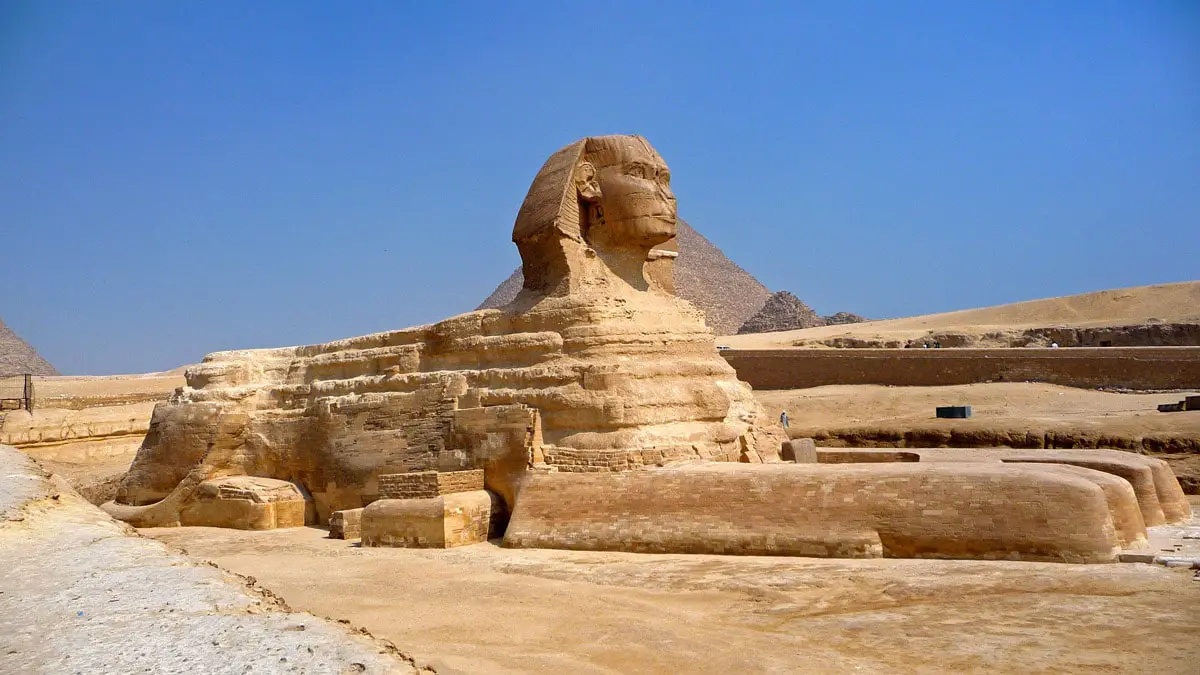
 In short
In short
No one knows for sure why and when was built the largest monolithic statue in the world – the Great Sphinx of Giza. But most likely this is the oldest large, monumental sculpture in the world.
 66.3%
66.3%
GPS coordinates
Location, address
Writing in Arabian
Time of the construction
UNESCO World Heritage status
Map of the site
If you see this after your page is loaded completely, leafletJS files are missing.
 In detail
In detail
Giza Plateau – important ancient shrine
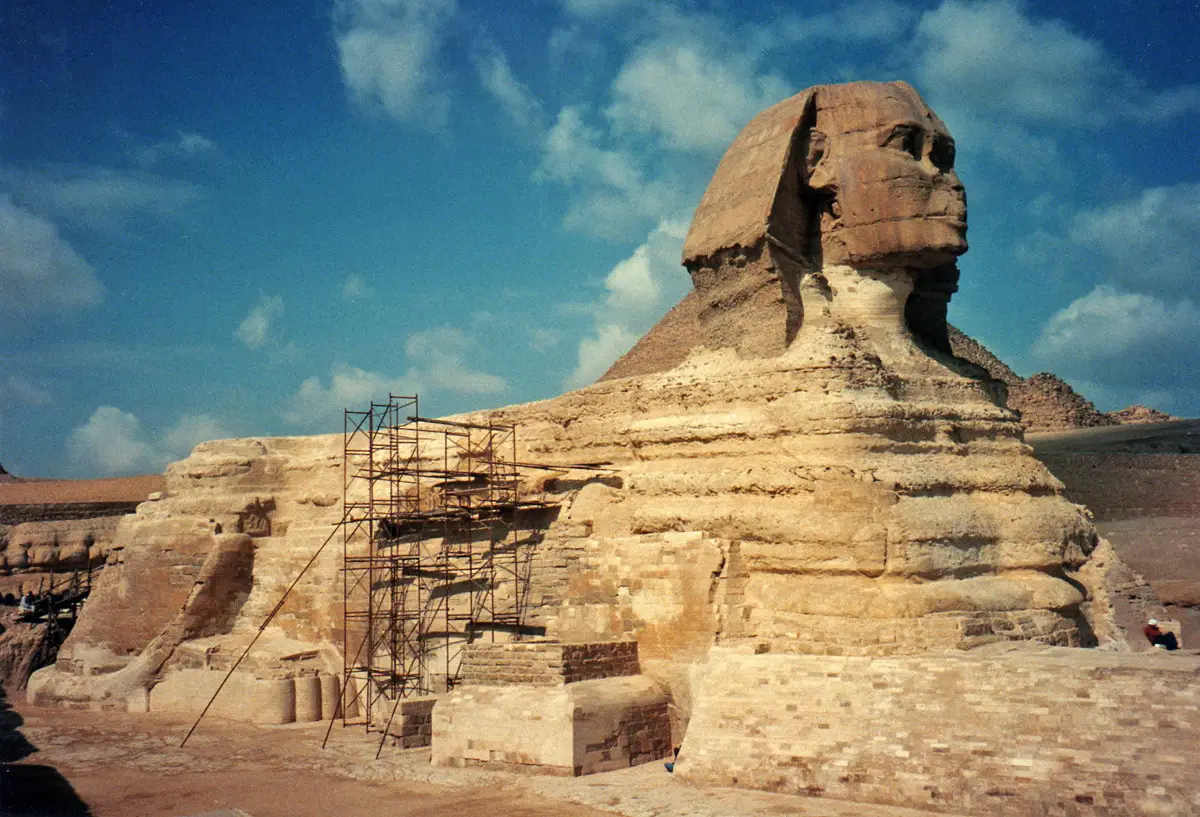
Giza Plateau formed some 50 million years ago when the Eocene limestone (so-called Mokkattam Formation) was exposed above sea level. The dry desert plateau is overlooking the wide valley of the Nile and rises some 30 – 60 m above the fertile plains.
As one of the first civilizations in the world – Ancient Egypt – started to develop here, Giza Plateau became an important sacred place. Plateau is suitable for this – it is above the flood level of the Nile and consists of good construction stone. Most likely before the construction of pyramids and sphinx here was located an important shrine of the Sun.
As it happens worldwide and in many cultures, the men of weight in Egypt wanted to preserve their status after death. One way to achieve this is to be buried in a sacred place. This raises the deceased to the status of a god. The sacred Giza Plateau was used as the necropolis of pharaohs and other important people since the 27th century BC. Here were built the most amazing structures of the antique world – the great Pyramids and Sphinx.
Sphinxes
Sphinx – a mythical creature with a body of an animal and a human head – is a very ancient symbol. The oldest known depictions of sphinxes were made in the Neolithic Age. Some of the oldest are in Nevali Çori site (Turkey): approximately 11,500 years old, small, exquisite sculptures of these beings.
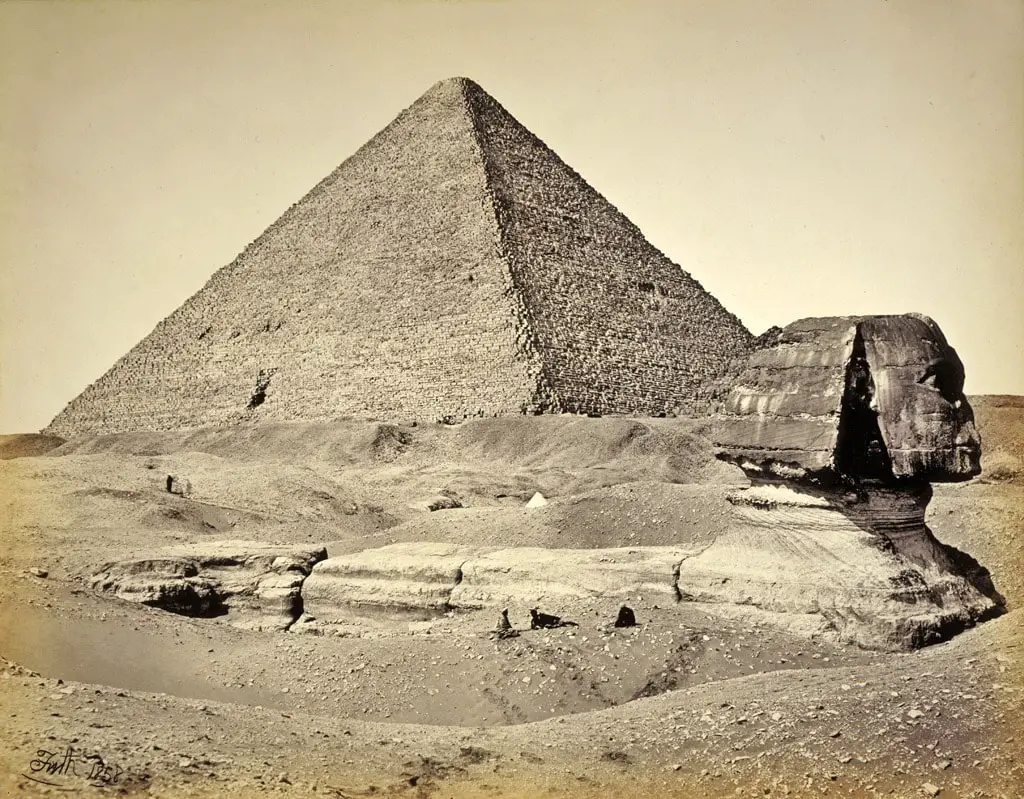
The purpose of this mythical creature is not clear with certainty. It seems often sphinxes "served" as guardians of sacred places – temples, and important burials. Such ancient, stone-carved guardians spread from the Levant to Egypt, Persia, India, Indonesia, and elsewhere.
In Greece sphinx was a demon of evil and bad luck. There is a famous legend about Oedipus who saved the city of Thebes from a monster with the head of a woman and the body of a lion. The monster stopped all travelers and asked a riddle: "What is it that has one voice and yet becomes four-footed and two-footed and three-footed?" None knew the answer, and sphinx strangled and devoured her hapless victims.
Oedipus knew the answer: "This is a man – he crawls on all fours when he is a child, walks on two in manhood, and leans on staff when he is old". Upon hearing this sphinx cast herself from the rock.
Name "sphinx" also comes from Greek language and means "to bind" or "to squeeze".
The oldest Egyptian sphinx
Great Sphinx of Giza is the oldest known sphinx in Egypt.
This is a riddle – exactly when and why was it shaped – but this Sphinx is the oldest monumental sculpture in the world. Many specialists consider that it was built in the time of Pharaoh Khafra who reigned in 2558 – 2532 BC, but there are no direct proofs of this.
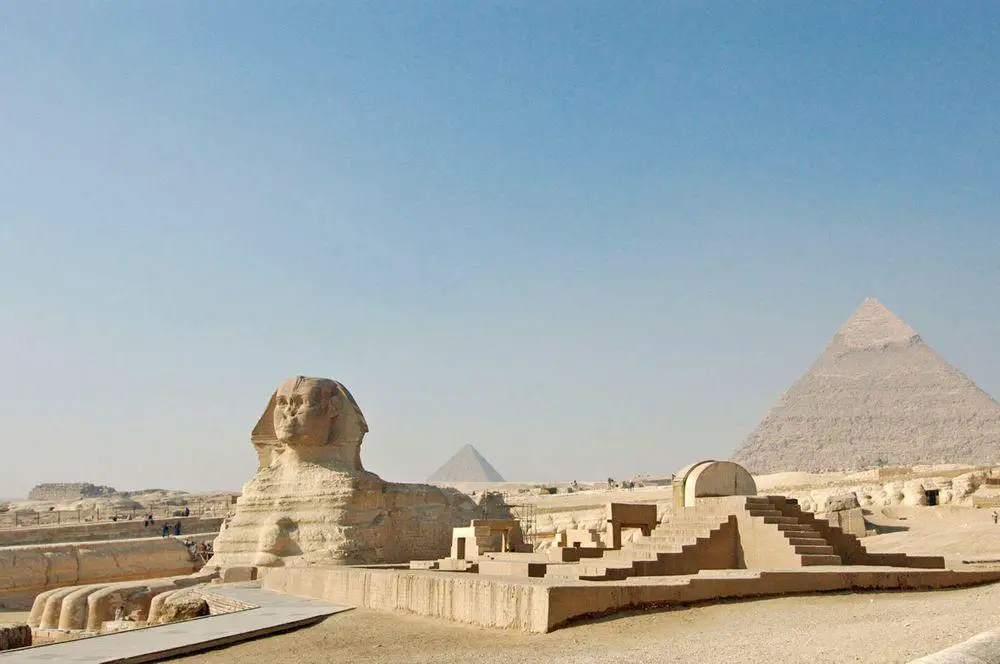
There are speculations that Sphinx is older and only its head was reshaped in the times of Khafra – made similar to Pharaoh. The head of a statue is disproportionately small indeed and less eroded than the body of the statue.
This difference in erosion though can be explained by the different properties of limestone layers. The lower layer of limestone has comparatively low quality and is heavily eroded – banded with deep, horizontal ridges. The upper layer at the height of the head is less porous.
The exotic "water erosion hypothesis" concedes that this monument could be built even in the 6th – 5th millennium BC. This was a period when the rainfall here was much higher and caused erosion of the enclosure around the Sphinx. The known history of Ancient Egypt does not support the hypothesis – such grand works required an organized and centralized society that did not exist yet.
Building of the statue
It is possible that there was a natural limestone hill at the site of this giant sculpture. Nevertheless, it is hard to tell now, because ancient Egyptians have heavily reshaped this area when taking material for the Great Pyramids and other structures. Most of the statue though was shaped by removing the limestone ground and creating a deep moat around the monument.
The removed stone blocks were used to build the so-called Sphinx Temple next to the statue and another – Valley Temple.
There have been found traces of color at one ear of the Sphinx – thus it is possible that the statue was brightly painted.
The statue had also a beard – most likely added after its construction. Parts of this beard have been preserved up to this day and are located in the British Museum, London.
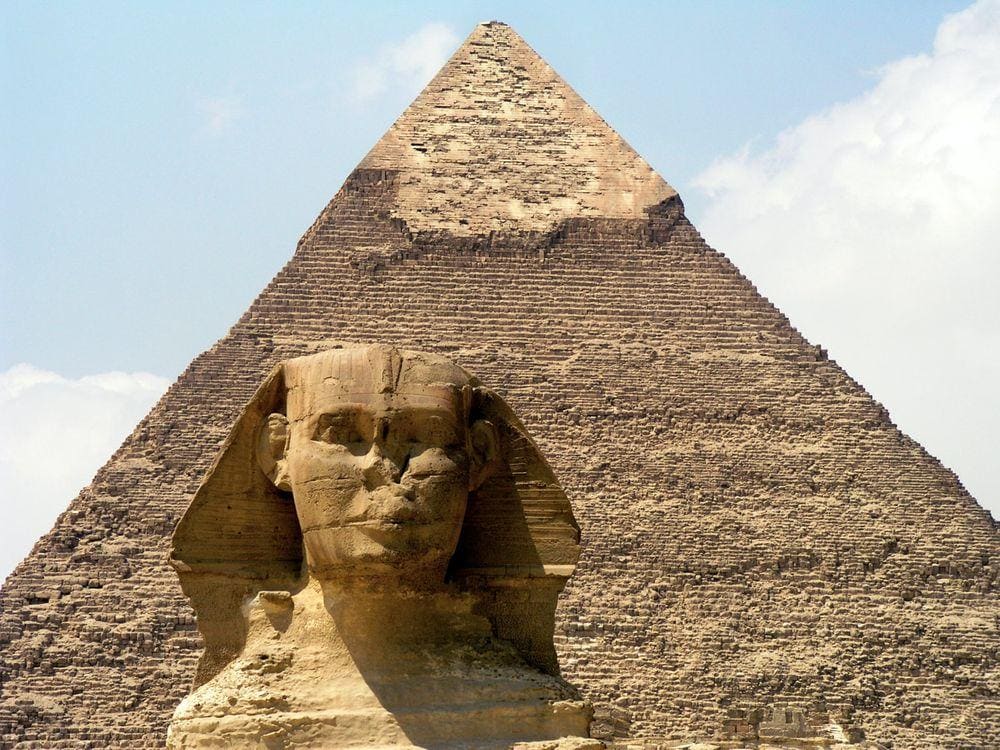
Giant guardian
Length of the statue is 73.5 m, 15 m of this is forelegs. Width is 19.3 m, height – 20.22 m.
Great Sphinx of Giza looks towards the sunrise, towards the Nile. The symbol of the lion in Old Egyptian mythology was closely linked to Sun (Sun deity Sekhmet) – thus it is possible that Sphinx was created as the guardian of the shrine on the Giza Plateau.
There have been not found mentions of the Sphinx in the writings of the Old Kingdom. In the New Kingdom, it was called Hor-em-akhet. This name was found on a granite slab – Dream Stele, which was placed between the forelegs of the Sphinx by Pharaoh Thutmose IV sometime around 1390 BC.
Later history
Sphinx was located on the grounds of the most important funerary complex in Egypt. But, when the necropolis was abandoned, Sphinx became buried in the sand up to its shoulders.
Several attempts to recover it were made in the times of the New Kingdom and Roman times. Statue was reinforced by ancient Greeks and Romans.
Monument has lost its nose – most likely this was done deliberately by Muslim fanatics in the late 14th century upon seeing that Egyptian peasants are making offerings to the Sphinx.
For many generations, throughout millennia people used to see just a part of the statue – a giant head perching out from the sand. In fact, this sand helped to preserve the unique statue. Spinx was recovered from the sand in 1925 – 1936. Now it is one of the symbols of Egypt and one of the best-known monuments of antiquity.
 Linked articles
Linked articles
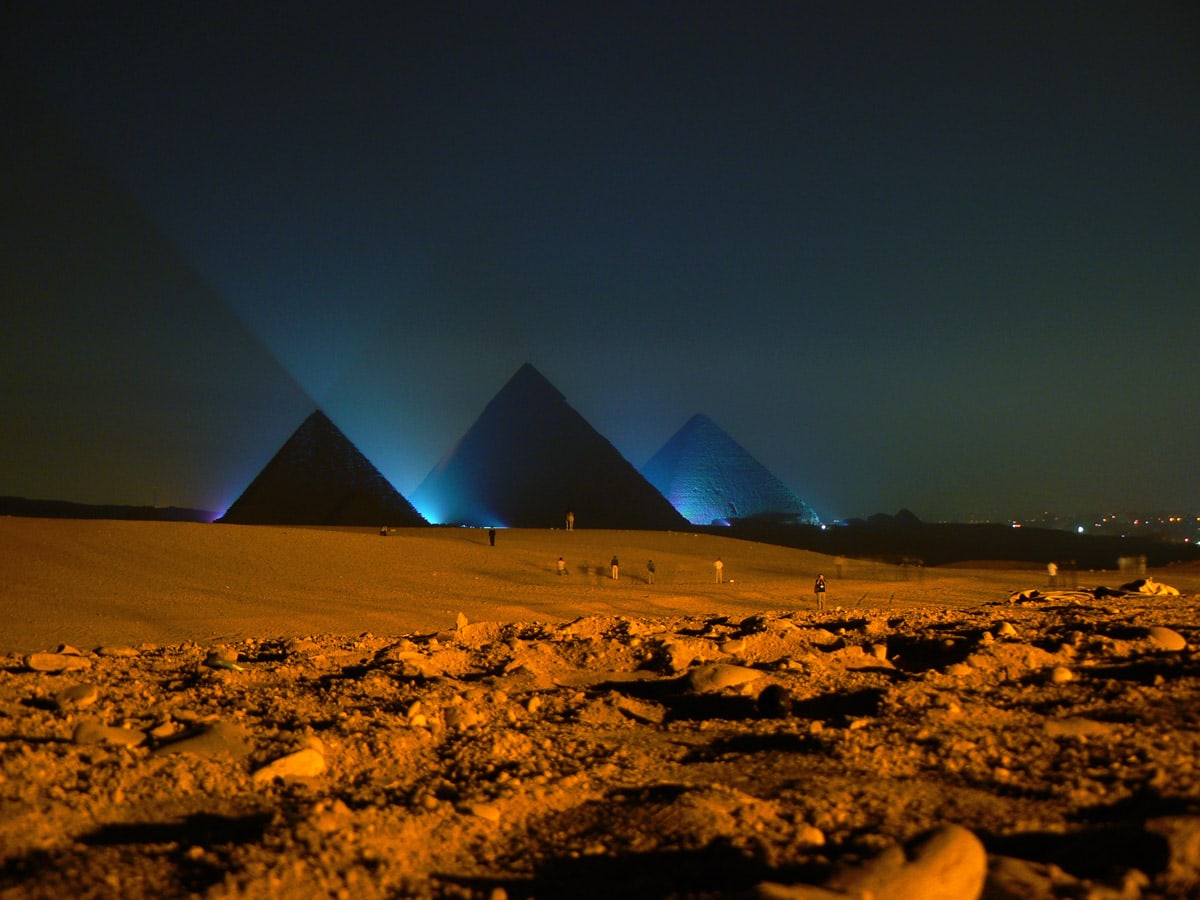
Wonders of Egypt
Egypt is home to many of the most important and impressive archaeological monuments in the world. Here, in the valley of the Nile developed one of the first and greatest civilizations – Ancient Egypt (3150 – 332 BC), leaving countless larger and smaller monuments.
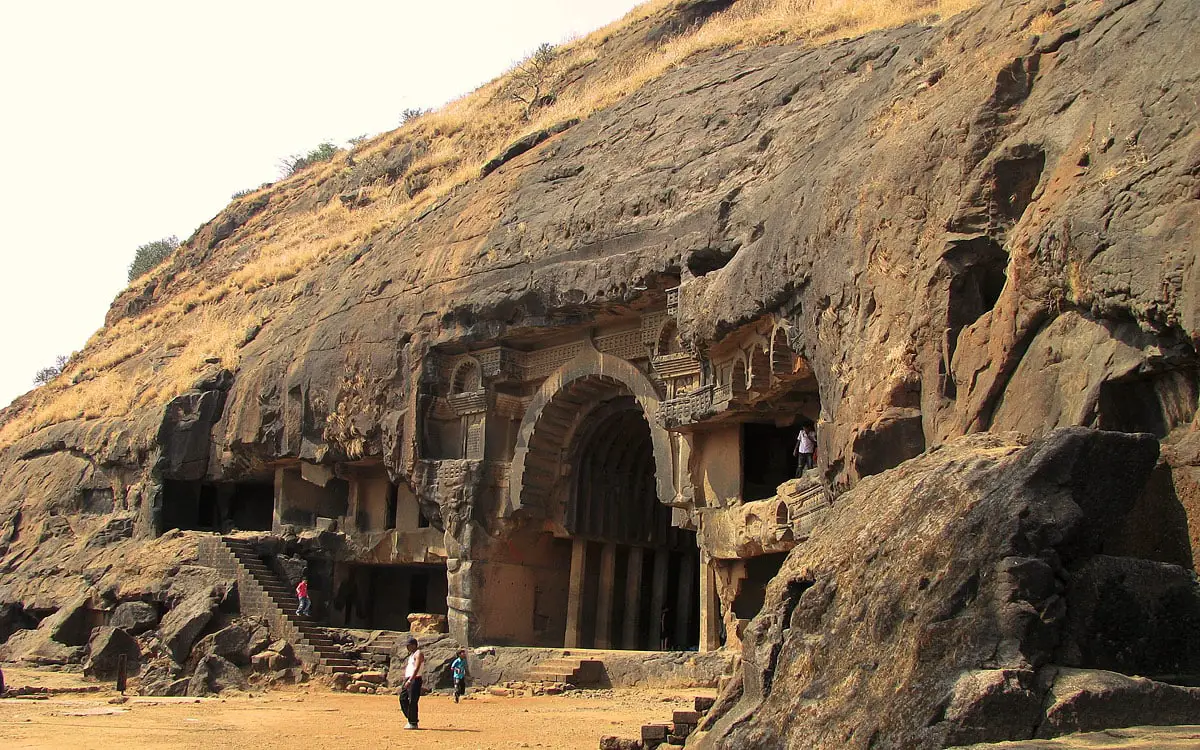
Rock-cut architecture and sculptures
Rock-cut architecture is a very ancient form of architecture – the oldest structures are more than 5 thousand years old. The resistivity of the natural stone and the constant climate inside these structures has preserved many art values around the world.
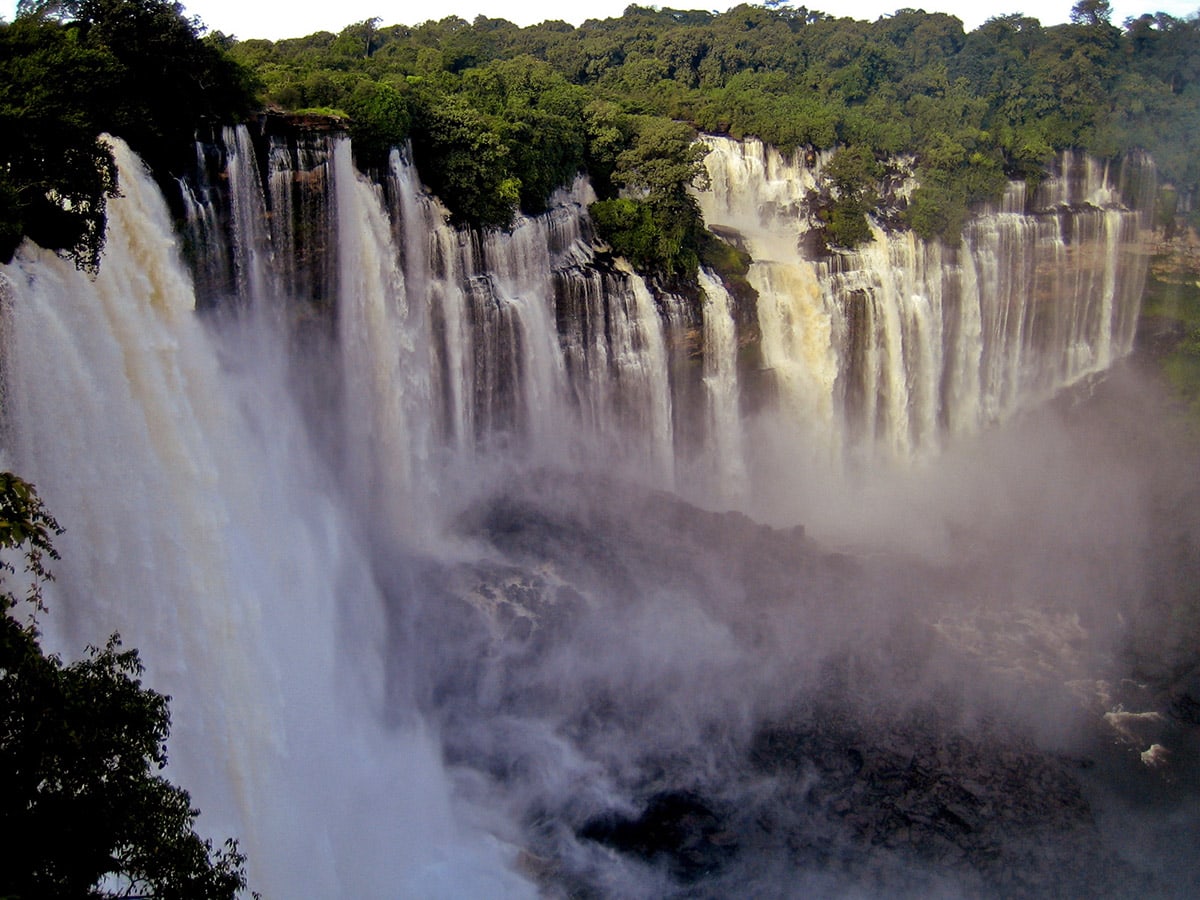
Wonders of Africa
Africa has many outstanding wonders and some of the most surprising ones are the heritage of Egyptian civilization, the vernacular architecture of the Sahel region, tropical ecosystems, and others.
 Recommended books
Recommended books
The Pyramids and the Great Sphinx of Giza
The pyramids of Egypt are such recognizable symbols of antiquity that for millennia, people have made assumptions about what they are and why they exist, without full consideration of the various meanings these ancient symbolic structures have had over the centuries.
The Pyramids and the Sphinx
Presenting up-to-date research and all-new photographs and plans, this authoritative volume provides a fascinating study of the Great Sphinx and the Pyramids of Giza. There are described also the lesser-known pyramids and tombs from Saqqara to Meidum and Dashur.


